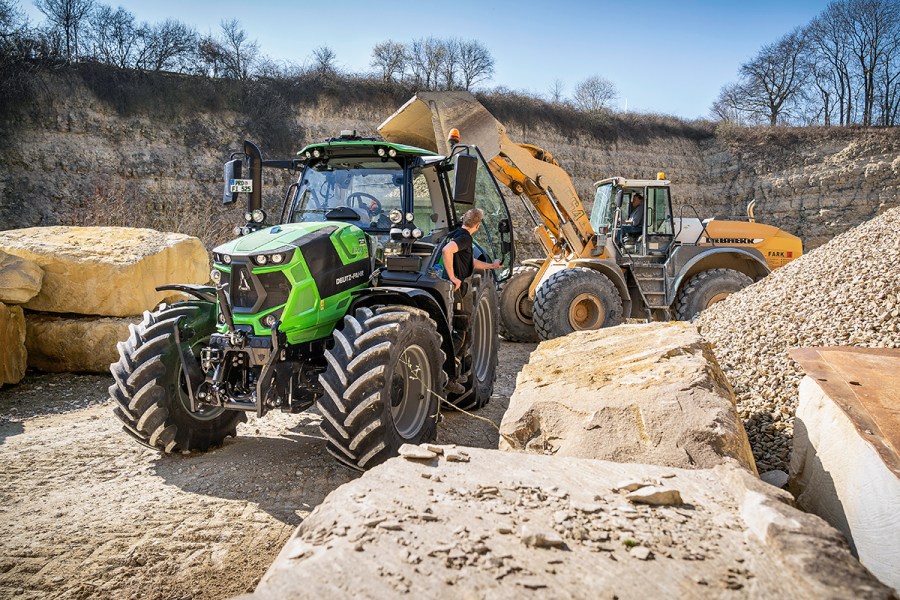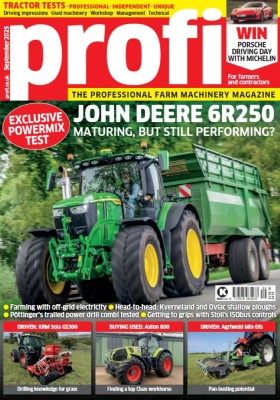The 6170.4 is the most powerful four-pot in the Deutz-Fahr line-up. But can it live with the bigger six-cylinder tractors? We find out in our exclusive test.
KEEPING IT BRIEF
- Is also available with the automated RCshift and stepless TTV transmissions.
- The tractive power is superb, the diesel consumption average. Hydraulic and linkage performance are where you want them to be for this power bracket.
- A payload of just under 4,000kg may be on the cusp of not being enough, but the ride comfort is very good.
During the photo shoot with the test 6170.4, in a quarry, the headline ‘Stone age’ briefly came to mind. After all, the Agrotron cab in terms of its basic frame is celebrating its 30th birthday this year. Moreover, the Agrotron 4.95 was the first ever tractor test in profi international 3/1996. However, things have certainly moved on inside the cab of the 6170.4, which we will get to later.
Our test tug is the largest of the four-model 6.4 range which stretches all the way from 96.2kW/129hp up to 127.5kW/171hp and is made in Lauingen, Germany. The 6130.4, 6140.4 and 6150.4 can come with a RVshift box (semi-powershift) or the TTV (stepless) transmission, whereas the 6170.4 has the additional option of a powershift, which is what we have here.
4 cylinders with 4 litres
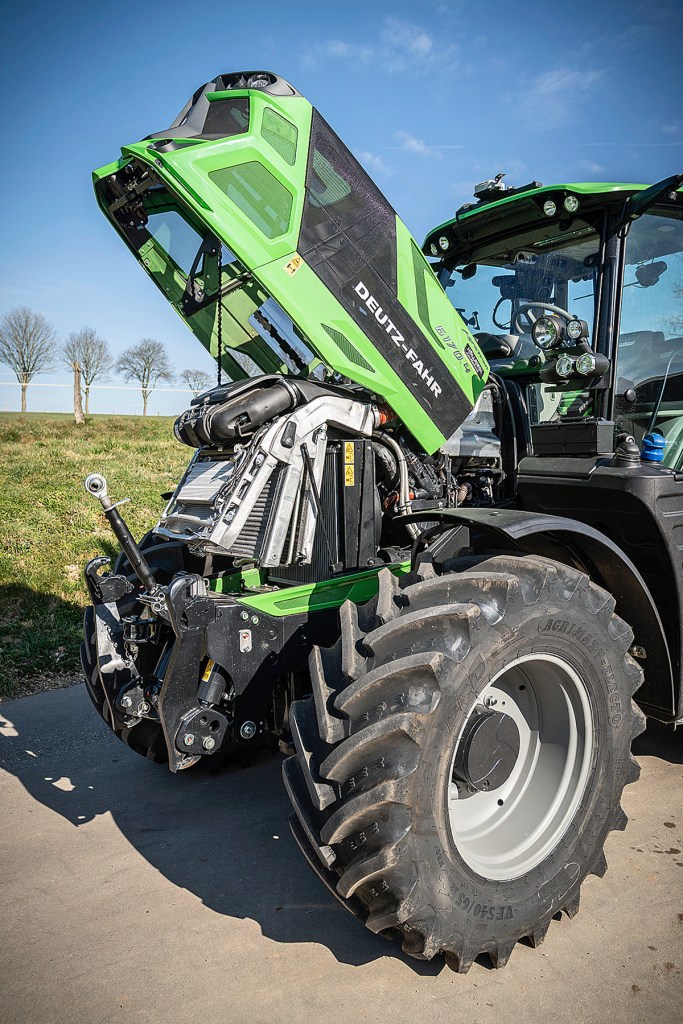
It’s not all style and no substance under the bonnet; our group of testers really liked how the radiator pack unfolds with a handle for easier cleaning with an airline. This goes to show just how it should be done. In fact, if a reversible fan was on the options list it would be perfect.
The TCD 4.1 is the well-known Deutz four-cylinder engine, supplying the muscle with a displacement of exactly 4.03 litres.
The exhaust system is kitted out with an oxidation catalyst, particulate filter and selective catalytic reduction, this trinity of DOC, DPF and SCR meeting the needs of Stage V — a familiar set-up, too. In addition to the decent 300-litre diesel tank, there is also a 21-litre AdBlue tank. Which brings us nicely on to test bench measurements from the DLG.
Performance (very) good …
Hooked up to the DLG’s dyno, the engine delivered exactly 102.6kW/137.6hp of its specified 120kW/160.9hp while revving at its rated speed of 2,100rpm. The maximum output at 1,900rpm was 112.6kW/151.0hp as compared to the 126kW/169hp stated in the brochure.
Perfectly reasonable results, especially as the DLG also noted an equally impressive maximum torque figure of 653Nm and a 40% increase in torque with only a 33% drop in speed. This power is also noticeable in work as soon as you venture out of the lower engine speed range.
Speaking of power, while the temperature inside the DLG hall was 20°C during the pto measurement, outside it was only a low 5°C during the drawbar power measurements, so that the 6170.4 developed a maximum lugging power of 109.8kW/147.2hp — very good!
… average fuel economy
However, we also need to talk about diesel consumption at this point. The 281g/kWh (+ 12g/kWh DEF) at rated speed and 266g/kWh (+ 12.7g/kWh DEF) at maximum pto output are above average for this power bracket. Even in our practical Powermix tests the Deutz’s diesel appetite was above average especially during heavy pto work. Overall, however, the result is acceptable.
The 6170.4’s‘Powershift’ transmission with its manually selected five ranges and a total of six powershift speeds is not only £8,000 or £39,000 cheaper than the automated RCshift or the continuously variable TTV (including electric spools, load-sensing pump, armrest etc.), but it also has a good gear spacing, and the six-speed powershift transmission covers a reasonable speed range.
In addition to 40km/hr (at 1,575rpm), there is a 50km/hr speed version which is what we had for this particular test. However, the higher engine speed (1,970rpm) has a noticeable impact on fuel consumption, as our transport test shows. There was also a rather annoying transmission noise when travelling at faster speeds.
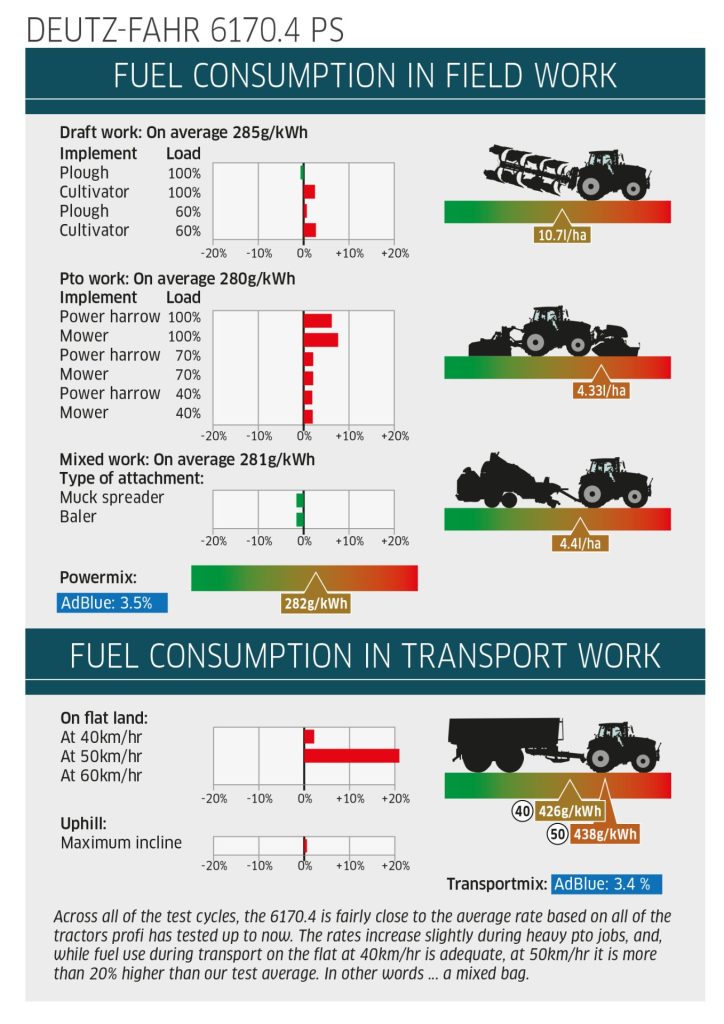
Simple load switch
While the gear lever’s somewhat spongy feel takes some getting used to, the load-sensing auto powershift changes work really well, but this APS feature is a £500 option. The shift timing is set via the Eco/Power control, and the engine rpm window is set in the menu. Not so practical is that the changed start-off gear only comes into effect the second time the clutch is engaged.
Extra plus points go to the optional creeper range (from 370m/hr) and the standard five-stage adjustable shuttle response. You also get all four pto speeds from 540 to 1,000E which are selected by operating one of two Bowden cable levers. The button that allows the pto to remain engaged if you leave the seat works perfectly.
Order the swash plate pump
Standard fit in the 6170.4 is a gear pump capable of delivering a measly 84l/min! You should definitely invest the £2,223 in the swash plate pump which produces 120l/min, or, if you have a lot of hydraulic work, then perhaps the 160l/min version (£3,277) may be more appealing. The DLG test centre measured 118l/min and 33.7kW of usable power with the smaller swash plate pump. This is fine, as are the 40 litres of usable oil.
As for the spools, there is the option of both mechanical and electrical valves. Our tractor had two electric valves with time and flow control and two manual spools on the console with a mechanical throttle. If, for example, you specify a front loader, the corresponding mid-mount valves are available. The labelling for the rear couplers is good. Yet, there are no relief levers, and the dust caps are not suitable for short male fittings — annoying!
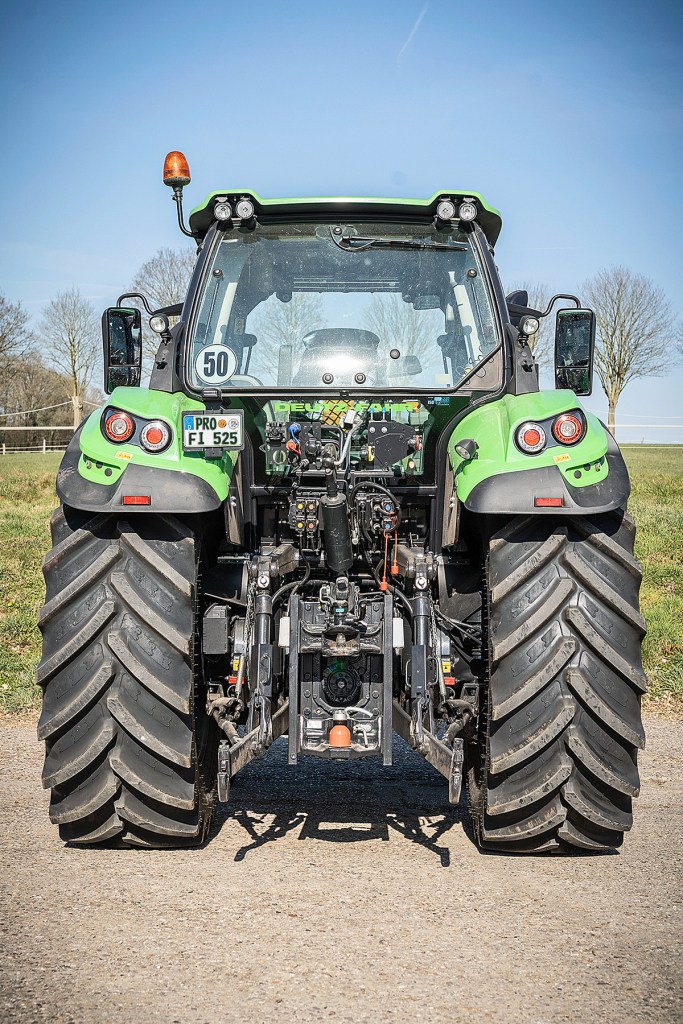
Plenty of lifting power
Instead of the 80mm diameter assister rams at the rear, our tractor had the 100mm version, a £598 extra.
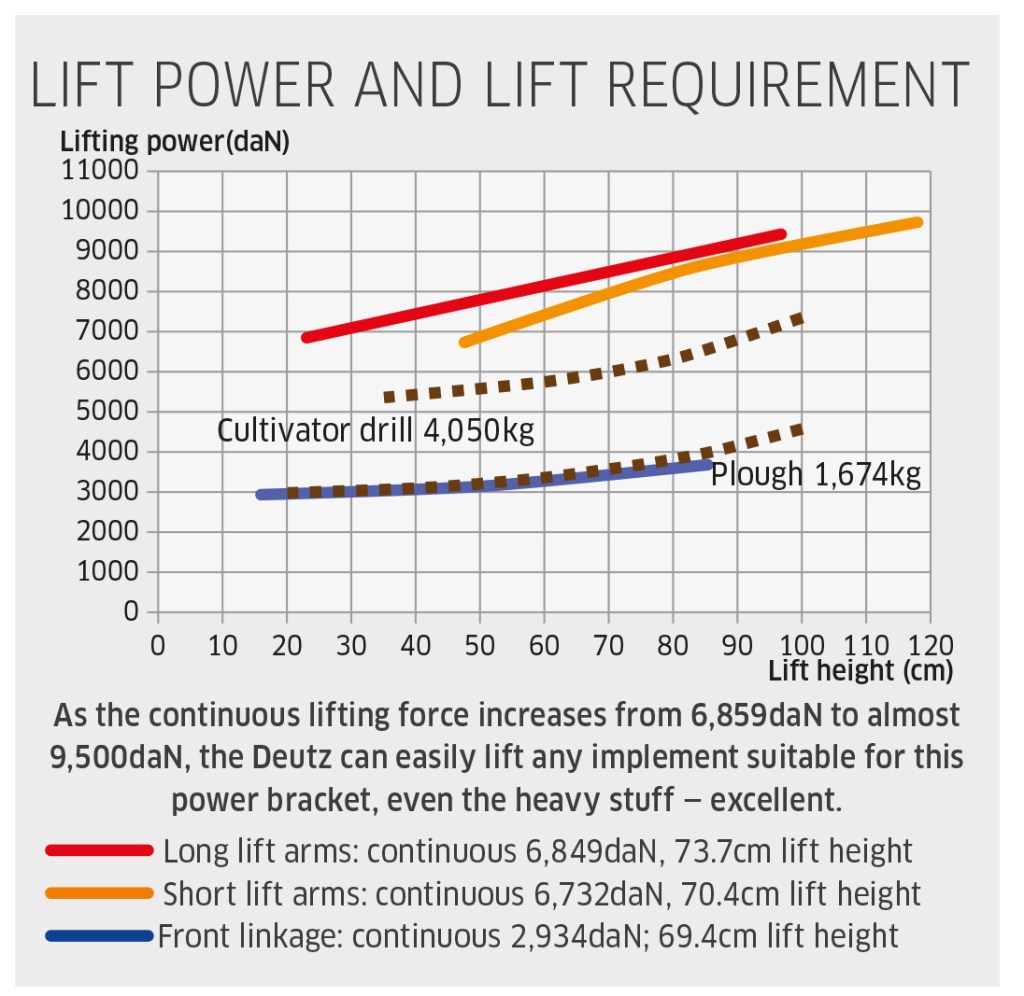
The DLG test centre measured a continuous lifting force of 6,850daN, which increases to an impressive 9,400daN as the linkage is raised. The four-cylinder Deutz can easily lift all the big kit that it can pull. And the front linkage also has plenty of reserves with a continuous lifting force of almost 3,000daN — great!

The familiar operation of the Bosch ELC is straightforward. But rather than the usual armrest-mounted controls, our test tractor came with an adjustable control pod on the side console. This is home to buttons for the quick-lift out control, hydraulic cross lever, powershift hand throttle, speed memory, although we were not big fans of the switch layout. And the fact that the adjustable depth marker for the position control always rotates is still an unsolved annoyance. Likewise, you have to get used to activating the linkage by pressing a button or double-pressing the mudguard switch before you can use it.
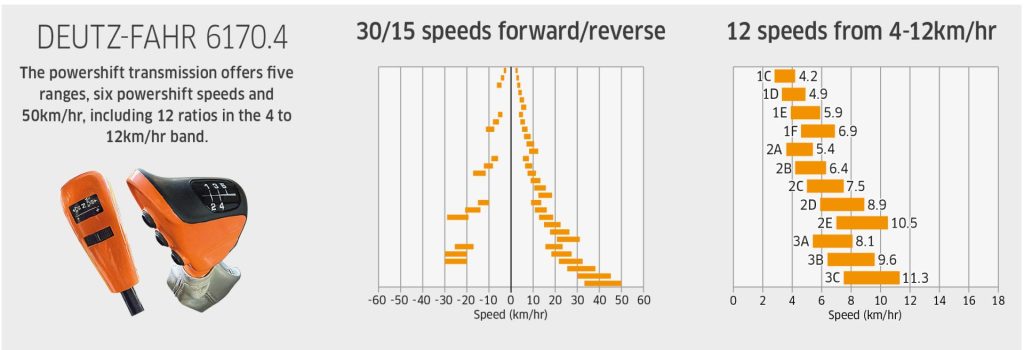
Cab with a long tradition
As far as the cab as a whole is concerned, we’ve already mentioned the 30th birthday. Even though the cab has been continually improved over the years, the six pillars and 73.7dB(A) under load are no longer the benchmark. On the other hand, competitors could do with taking note of the passenger seat, cup holders and other handy storage compartments, which are all top notch.
The air-conditioning system wasn’t under any pressure during our autumn/spring test time, and we assume the familiar problems encountered previously have now been fully resolved. The cabin filters on the right and left of the B-pillars have been changed — but not for the better. Although water can no longer easily sneak its way in past the cover, the new Torx screw fittings are not practical.
When it comes to work light selection, there are plenty of user options, all conveniently controlled from the panel on the right B-post. Also optional is the smaller IMonitor and ‘EasySteer’, which brings adjustable steering ratios. Only the activation button on the side of the control pod isn’t easy to spot.
Payload of just under 4t
One problem that many higher horsepower four-cylinder engines have is the payload. With an unladen weight of 7,330kg in test configuration and a total permissible gross weight of only 11.5 tonnes, the 6170.4 has a payload of just 4,170kg. However, the very good braking (we measured 5.1m/s²) makes us think there is the potential for a bigger gross weight figure.
As far as tyres are concerned, our tractor was amply equipped with VF540/60 R28 front and VF650/65 R38 rear tyres at a cost of around £5k. In addition to the unusually firm front axle suspension, the pneumatic cab suspension on our 6170.4 model (£1,480) is certainly responsible for the comfortable ride on the road. Combined with the tight turning circle of just 10.8m (194cm track width), you ultimately get a comfortable and manoeuvrable tractor.
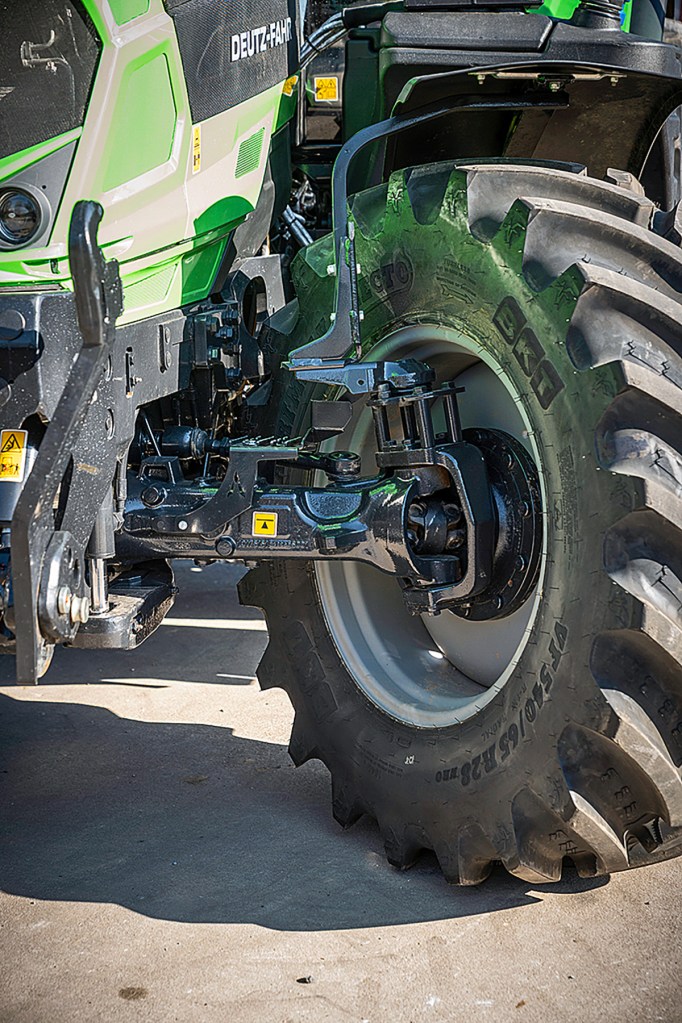
1,000hr oil change interval
Lastly, maintenance and prices. Oil change intervals of 1,000 hours are good, not just for the transmission and hydraulics but also for the engine. We already praised the accessibility of the radiators, and it is very good. The air coupler on the cab steps and the factory-installed spiral hose with gun (including storage box to the left of the tank) are also noteworthy details.
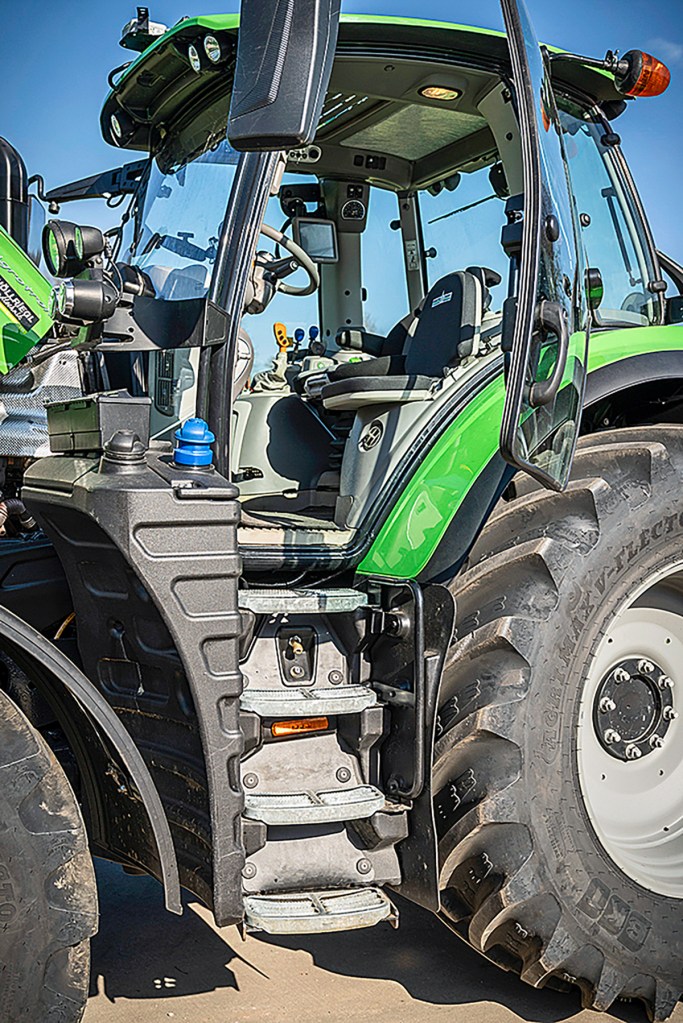
As far as the prices are concerned, our test tractor tots up to £187,100; yes it is list but still very high.
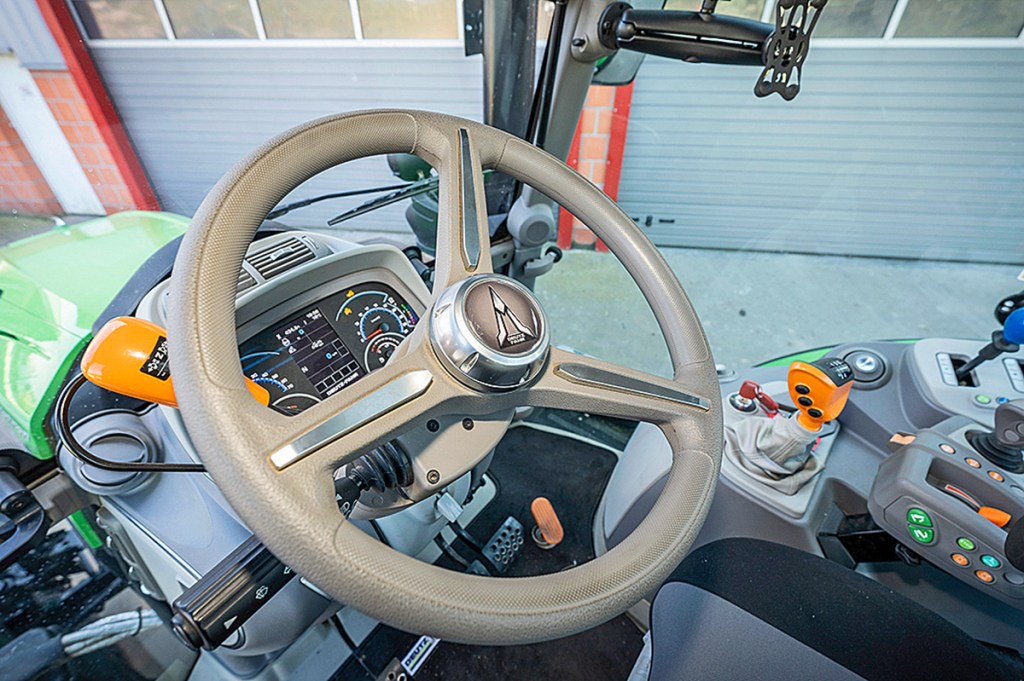
Summary
In the 6170.4 model, Deutz-Fahr has a four-cylinder that can also take on the ‘big boys’ — regardless of whether it is a question of pulling power or lifting capacity. It only falls short when it comes to payload.
As far as diesel consumption is concerned, the test candidate is not a fuel-efficient beast — especially when high engine speeds are a ‘must’, such as on pto jobs or for high speed haulage. Apart from that, the simple powershift box does a good job, and the tractor is always at the forefront when it comes to driving comfort.
However, the cab can’t escape its age: six posts, a seat that can only rotate 20° and almost 74dB(A) noise level — these details could be better on a tractor that comes in at a relatively substantial £187,100 in its tested guise. In standard spec, the list price is from £159,998.
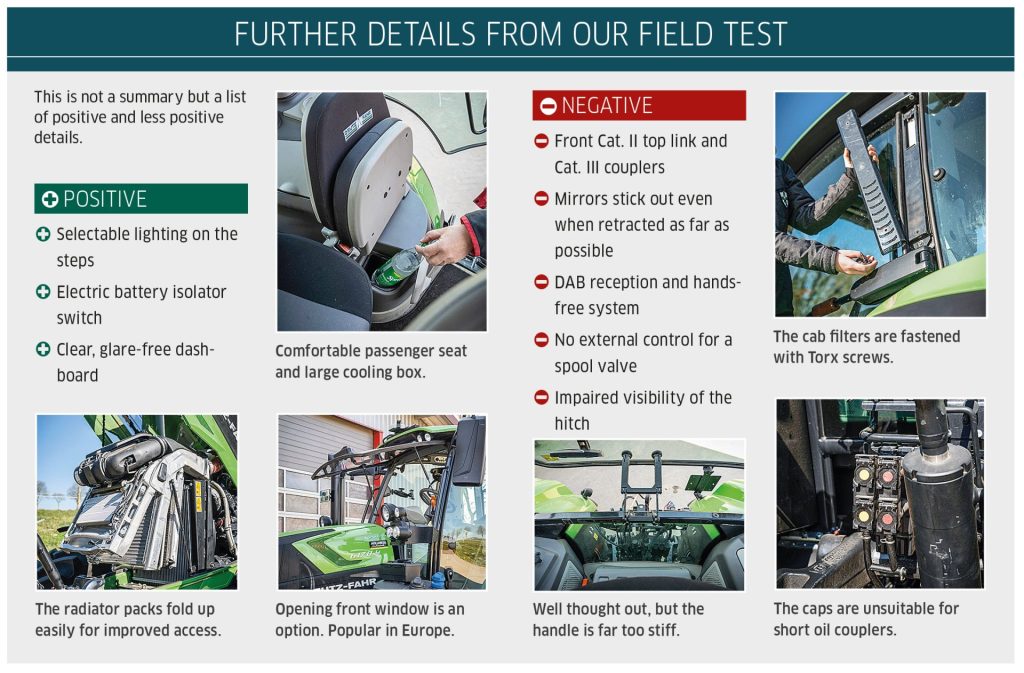
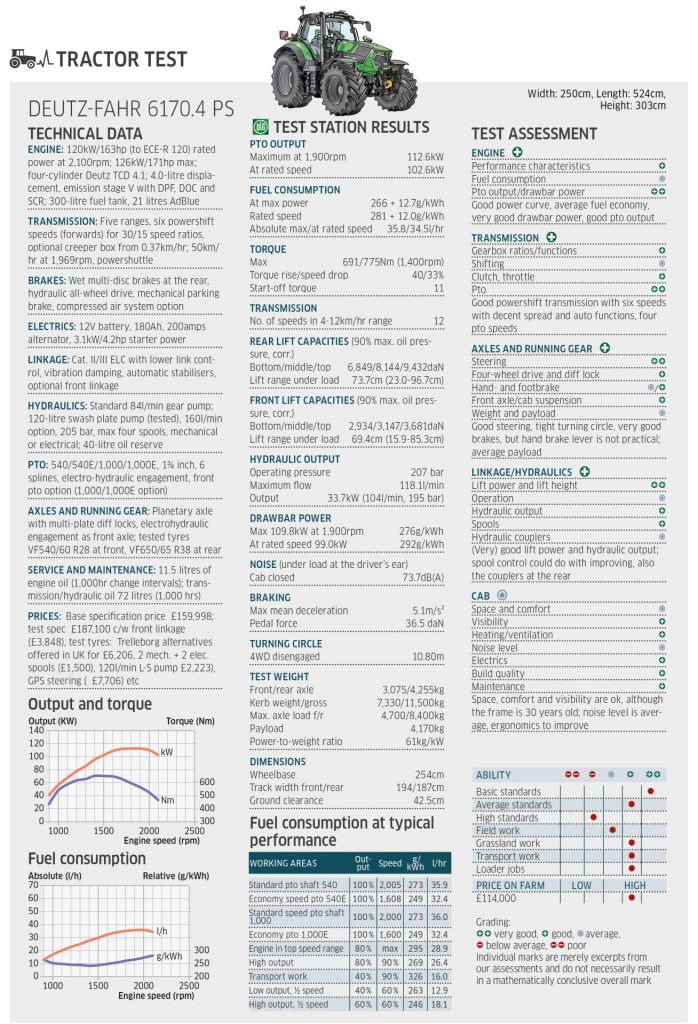
Hubert Wilmer
For more up-to-date farming news click here and subscribe now to profi and save.

